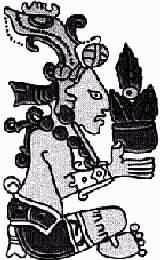Mythology
 From Conservapedia
From Conservapedia 
Mythology (mi-thol-uh-jee) The word comes from the Greek "mythos" which means "fable" or "legend". Mythology is a collection of myths.
1. The English word "myth", in another view could come from the Greek muthos ("utterance" or "speech") and is a narrative and expression of the sacred. Traditionally, myths function as a model for human activity, society, wisdom, and knowledge. [1]
2. A traditional story or legend, usually concerning some superhuman being or some alleged person or event, with or without a determinable basis of fact or a natural explanation, especially those concerned with deities or demigods and the creation of the world and its in habitants. [2]
3. It is believed that myths possess an element of historical truth and that mythical characters are often kings and other heroes who have been given the honor of deification, that is to say, to be worshiped as a god. Myths are also tied to practices and institutions associated with religious rites and beliefs.
Contents
- 1 Common Myths
- 2 "Monomyth"
- 3 See also
- 4 External links
Common Myths[edit]
Greek mythology is one of the richest collections of myths. It refers to the stories created by the ancient Greeks, concerning gods and heroes like Zeus, Athena, Artemis, Odysseus and Achilles.
Ainu, Armenian, Assyro-Babylonian, Asturian, Aztec, Basque, Canaanite, Cantabrian, Catalan, Celtic, Chinese, Egyptian, Estonian, Etruscan, Filipino, Finnish, Irish, Guarani, Hawaiian, Hindu, Inca, Latvian, Lithuanian, Lusitanian, Māori, Mayan, Mesopotamian, Norse, Paleo-Balkanic, Persian, Roman, Sami, Shinto, Slavic, Arabian and Zoroastrian mythology are also important. All are rich sources of myths, legends and heroes.
Cupid is an example of Roman mythology.
Among the Aztec myths we can find the Quetzalcoatl Myth. The similar in Mayan mythology is Kukulcan.
Much Chinese mythology is based on animism, which sees the land itself as alive. It contains many therianthropic creatures, who are both animal and human, and demonstrates the playfulness of the gods.Chinese Myths
"Monomyth"[edit]
Joseph Campbell, the author of The Hero with a Thousand Faces, has commented extensively on the similarities between many cross-cultural myths. Moving beyond noting recurrent themes (apples, in most western mythologies, etc.), Campbell notes rather that the structures of most myths are inherently similar, suggesting an underlying myth with a peculiarly great relevance to the human mind. The steps of the "monomyth" are, essentially,
- Identification of a commoner as the main character.
- The commoner is called to an adventure outside of his normal life, with the aid of a teacher figure.
- The commoner declines.
- The commoner enters the new "second world," where his adventure will take place.
- The commoner enters the "innermost cave," where the greatest challenge of the myth occurs, and finally,
- The commoner returns to his world, himself changed, and reflects upon the change wrought upon himself and his world.
An example of a modern "myth" following Campbell's structure is Star Wars, where the hero, Luke Skywalker, goes through all stages identified above. Star Wars was crafted with Campbell's structure in mind. An example of a myth that pre-dates Campbell is The Lord of the Rings, where, curiously, Samwise Gamgee appears as one of the main characters (and Bilbo Baggins does the same in The Hobbit).
See also[edit]
- Toltecs
- King Arthur
- Saint Nicholas
- Religion
- Robin Hood
External links[edit]
- MYTHOLOGY
- Egyptian Gods
- Worldwide Links to Mythologies
- Artemis
Categories: [Mythology]
↧ Download as ZWI file | Last modified: 02/18/2023 18:00:06 | 324 views
☰ Source: https://www.conservapedia.com/Mythology | License: CC BY-SA 3.0
 ZWI signed:
ZWI signed: KSF
KSF